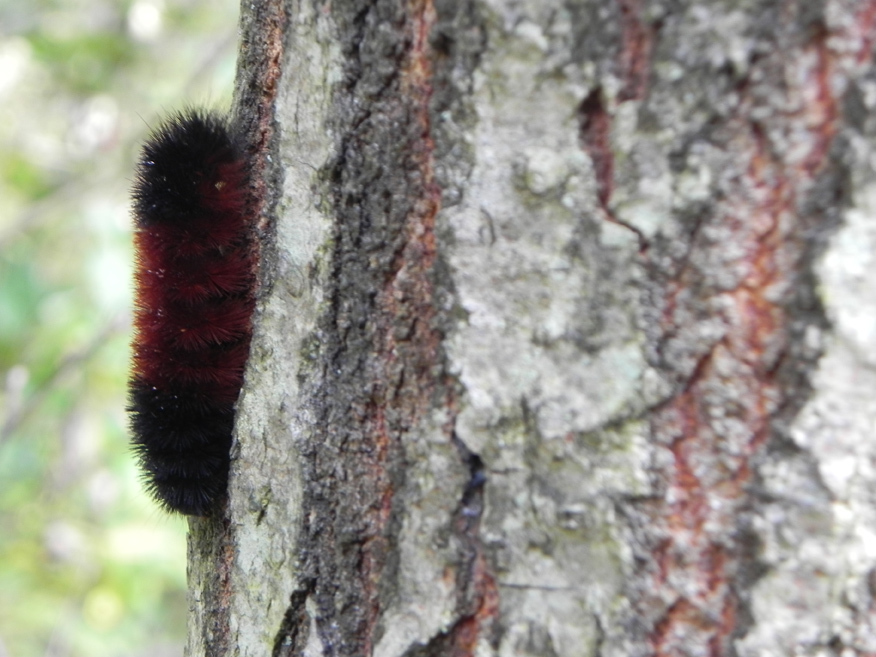Woolly Bear Predictions

A Wooly Bear Caterpillar pictured climbing a tree. Photo by Jeff Tome
Woolly Bears.
These fuzzy orange and black caterpillars seem to be everywhere: crossing roads, hiking down trails, wandering along the sidewalk. The rumors about how they predict the winter seem to be as prolific as the caterpillars themselves.
One person told me that abundant caterpillars mean a mild winter. Another told me that it means the winter will be harsh. It’s also been said that their frantic crawling means a hideously cold winter. Some say a wide orange stripe means a long winter, while others say it means a short winter.
The truth is that woolly bear caterpillars have something in common with many people: an unfailing ability to predict the past with 100% accuracy. This generation of woolly bears hatched in the late summer and early fall and immediately began to eat. They grow so fast that they outgrow their skin, much like a baby sheds those newborn outfits very quickly. Each time they shed their skin, there is a little bit more orange on the caterpillar. With a long, mild fall, the caterpillars have more orange on them than usual because they are shedding their skin more often. In a cold fall, they would shed less often and, consequently, have more black on them, indicating that the last few weeks had been cool.
In short, woolly bear caterpillars tell us what kind of fall we have had in much the same way delving into my laundry would. If my laundry is full of sweaters and long-sleeved shirts, then the fall has been cool, just like if a woolly bear’s coat is mostly black. If my hamper is full of t-shirts and shorts, then the weather has been warm, just as if the woolly bear’s coat had more orange. Please don’t visit to investigate my dirty laundry to predict the past, though. You can probably do that in the comfort and privacy of your own home.
The thing is, deep down, no one really wants to know that caterpillars aren’t predicting the type of winter we will have. It is so much more fun to listen to the theories, share experiences and guess what the winter will be like. Scientists may have figured out why the woolly bear’s stripes have different widths, but the truth is not nearly as good as the stories that are out there. Sometimes, a good story can be better that a good scientific study.
Jeff Tome is a Senior Naturalist for Programs and Exhibits at the Jamestown Audubon Society and a longtime CWC volunteer and former board director. The Chautauqua Watershed Conservancy is a local, private nonprofit organization with a mission to preserve and enhance the water quality, scenic beauty, and ecological health of the lakes, streams, wetlands and watersheds of the Chautauqua region. For more information on CWC, visit us at chautauquawatershed.org or facebook.com/chautauquawatershed or call 664-2166.






